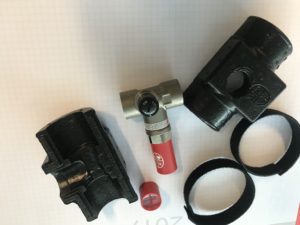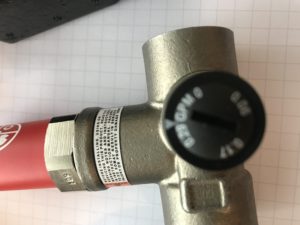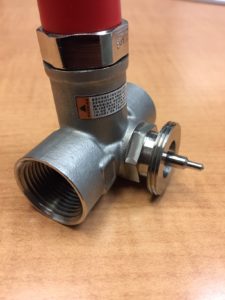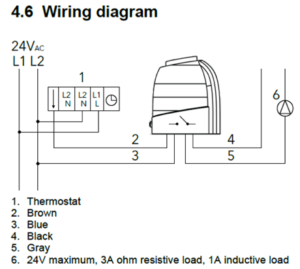In the last R. L. Deppmann Monday Morning Minutes, we introduced the newest addition to the art of balancing in domestic hot water recirculation systems with the thermostatically controlled balance valve. Today we continue with the value of the “bypass option” for these valves.
What is the Bypass Option and Should I Specify That Option?
The Bell & Gossett (B&G) Temp Setter domestic water recirculation balance valve is a thermostatically controlled balance valve that will modulate to maintain the set temperature, but will not close completely. This feature will ensure a minimal flow rate to prevent stagnant water in the recirculation lines.
ASHRAE Standard 188 refers to disinfection procedures which may include circulating 160°F water to kill any Legionella. How do I do that with a valve set at 124°F? The answer is the bypass option.
If your system is covered by ASHRAE Standard 188 and will require a disinfection process using 160°F water, we would recommend the bypass option. You may consider standardizing on this option in your specification.
What is the Difference between the Manual and Automatic Bypass Options?
The B&G series TSB Temp Setter includes a bypass for those rare times when a plumbing system disinfection cycle is needed. The bypass has an adjustable range of 0.06 GPM to 0.29 GPM. The bypass option will allow the system to be set manually or automatically.
The manual version of the TSB bypass would remain at the minimum flow of 0.06 GPM during normal operation. If the system requires disinfection, the plumber or owner would go around to each valve and manually set the valve up to the 0.29 GPM setting. Once the disinfection is complete, the valves would be manually reset to the minimum bypass of 0.06 GPM.
The automatic version would be great for the client who has an issue finding and setting the valves. Since a disinfection routine is coupled with a great deal of stress, I would recommend the automatic version that requires a 24Vdc actuator if the budget can stand it.
The automatic version would require wiring of the low voltage 24 V to the bypass actuator on the valve. See the wiring diagram below. When a disinfection event occurs, the BMS would power 2-3 and the bypass would open. Once the slow opening (about 6 minutes) valve is open, lines 4-5 are closed which could be used to verify the valves are open or can simply not be used.
In the near future, our website will have links for a specification and CAD detail. Until it is available, feel free to contact us or your local B&G representative for more information.
So what are the advantages of the Best offering for domestic water balance?
- Modulating control strategy saves energy by reducing the flow rate when not needed
- Ability to use ECM smart pumps for additional energy savings since the flow rate varies
- No need to rely on balancing
- Able to oversize the pump head for those odd situations where some supply pressure drop is added to the recirculating pump and throttle when ECM pumps are used
- Insulation block included
- Temperature sensitive wax is not in contact with the water
I mention ECM twice in the above statements. Come back next week to the R. L. Deppmann Monday Morning Minutes for a look at ECM pumps and hot water recirculation systems.





